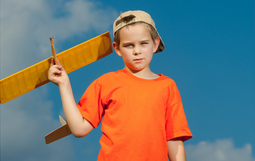Unlocking the Power: Exploring the Remarkable Potential of Neural Networks and Deep Learning in Autonomous Drones with AEROGO.
I. Understanding Neural Networks and Deep Learning:
Demystifying Neural Networks:
Neural networks form the foundation of deep learning, a powerful branch of artificial intelligence. In this section, we delve into the complexities of neural networks, providing a comprehensive overview to demystify their workings.
1.1. Unraveling the Complexities: A Comprehensive Overview of Neural Networks:
We explore the fundamental concepts of neural networks, their structure, and their ability to process and analyze complex data. From input layers to hidden layers and output layers, we break down the components and explain how they work together to make neural networks effective learning systems.
1.2.Unraveling the Complexities: A Comprehensive Overview of Neural Networks:eural Networks:
To gain a deeper understanding, we dive into the intricate components of neural networks, including neurons, activation functions, and weight connections. By comprehending their roles and interactions, readers can grasp how neural networks process information and make predictions.
1.3. Harnessing the Learning Process: How Neural Networks Mimic the Human Brain's Capacity for Learning:
Neural networks are inspired by the human brain's learning mechanisms. We explore how neural networks learn from data through the process of training, adjusting their weights and biases to improve their accuracy and predictive capabilities. This section sheds light on the training process and the various algorithms used, such as backpropagation.
Applications of Deep Learning in Autonomous Drones:
Deep learning, a subset of machine learning, has revolutionized the capabilities of autonomous drones. In this section, we explore how deep learning algorithms enhance drone functionality and enable them to perform advanced tasks.
- Revolutionizing Object Detection: How Deep Learning Empowers Drones to Identify and Track Objects with Precision:
Deep learning algorithms have revolutionized object detection in drones. We delve into the techniques and models used, such as convolutional neural networks (CNNs), that enable drones to accurately identify and track objects in real-time. This breakthrough has significant implications for various applications, including search and rescue operations and surveillance.
- Navigating the Unknown: Enhancing Autonomous Navigation and Path Planning Using Deep Learning Algorithms:
Deep learning algorithms play a crucial role in improving autonomous navigation for drones. We explore how these algorithms, combined with sensor data, enable drones to analyze and interpret their environment, plan optimal paths, and navigate safely through complex terrains and obstacles.
- Real-Time Intelligence: Enabling Drones to Make Informed Decisions through Deep Learning Techniques:
Deep learning techniques enable drones to make real-time decisions based on the data they capture. We discuss how these techniques, including recurrent neural networks (RNNs) and long short-term memory (LSTM), empower drones to analyze and interpret data on the fly, enabling them to adapt to changing circumstances and make informed decisions in dynamic environments.
By understanding the complexities of neural networks and the applications of deep learning in autonomous drones, readers gain valuable insights into the transformative role of these technologies in the drone industry.
2. Enhancing Drone Vision and Perception: The Ultimate Guide to Neural Networks and Deep Learning in Autonomous Drones
2.1Unleashing the Power of Computer Vision:
Computer vision is a key technology that enhances the visual perception capabilities of autonomous drones. In this section, we delve into the world of computer vision and its application in enabling drones to "see" and understand their surroundings.
- Seeing the World Through Drones' Eyes: Exploring Computer Vision Techniques in Autonomous Drones:
We explore the fundamental principles of computer vision and its relevance to autonomous drones. From image processing to feature extraction and object recognition, we discuss the techniques and algorithms that enable drones to interpret visual data and gain a deeper understanding of their environment.
- Decoding Visual Data: Image Classification and Semantic Segmentation for Enhanced Perception:
Image classification and semantic segmentation are powerful techniques used in computer vision to categorize objects and understand the context of visual scenes. We explain how deep learning models, such as convolutional neural networks (CNNs) and semantic segmentation networks, enable drones to identify and classify objects accurately, leading to enhanced perception capabilities.
- Unveiling the Depth: Leveraging Deep Learning for Accurate Depth Estimation and 3D Mapping:
Accurate depth estimation and 3D mapping are vital for drones to navigate and interact with their surroundings effectively. We explore how deep learning algorithms, combined with stereo vision and LiDAR data, enable drones to estimate depth accurately, create detailed 3D maps, and perceive their environment in three dimensions.
2.2Mastering Object Tracking and Recognition:
- Tracking with Precision: How Neural Networks Enable Drones to Track and Follow Moving Objects:
Tracking moving objects is crucial for various applications, including surveillance, search and rescue, and sports analysis. We discuss how neural networks, such as recurrent neural networks (RNNs) and deep association networks, enable drones to track objects with precision by learning patterns and motion dynamics.
- Faces in the Sky: Facial Recognition in Autonomous Drones for Surveillance and Security Applications:
Facial recognition technology has immense potential in enhancing the surveillance and security capabilities of drones. We delve into the techniques and algorithms used in facial recognition systems, highlighting how drones can leverage this technology to identify individuals, enhance situational awareness, and aid in law enforcement activities.
By understanding the computer vision techniques employed in autonomous drones, including image classification, semantic segmentation, depth estimation, object tracking, and facial recognition, readers gain insights into the advanced perception capabilities of drones and their applications in various domains.
3. Empowering Drone Control and Autonomy:
3.1Reinforcement Learning for Autonomous Drones:
-Learning from Experience: An Introduction to Reinforcement Learning in Drone Control:
Reinforcement learning is a powerful technique that enables drones to learn and improve their decision-making abilities through trial and error. We provide an in-depth explanation of reinforcement learning algorithms, such as Q-learning and deep Q-networks (DQNs), and how they are applied in the context of drone control. By learning from experience and receiving feedback in the form of rewards, drones can autonomously optimize their control policies.
-A Journey of Rewards: Optimizing Drone Control Through Reward-Based Learning:
The concept of rewards plays a crucial role in reinforcement learning. We delve into the design of reward functions for drone control, discussing the challenges and strategies in defining appropriate rewards to guide the learning process effectively. Additionally, we explore techniques such as shaping rewards and using curiosity-driven exploration to enhance the learning capabilities of autonomous drones.
3.2 Safeguarding Flights: Collision Avoidance and Safe Autonomous Flight:
- Overcoming Obstacles: Enhancing Drone Safety with Deep Learning Techniques for Collision Avoidance:
Collision avoidance is essential for safe drone operations, especially in complex and dynamic environments. We examine how deep learning techniques, such as convolutional neural networks (CNNs) and recurrent neural networks (RNNs), are employed to enable drones to perceive and react to potential collision risks. We discuss obstacle detection, path planning, and reactive control strategies that ensure safe and reliable autonomous flight.
- Ensuring Safe Skies: Mitigating Risks and Enabling Safe Autonomous Flight in Complex Environments:
Autonomous drones face challenges when operating in complex environments with unpredictable factors. In this section, we explore techniques and technologies that mitigate risks and enable safe autonomous flight. This includes sensor fusion, adaptive control algorithms, and situational awareness frameworks that allow drones to make informed decisions and adapt their behavior to ensure safe skies.
By understanding the principles of reinforcement learning, reward-based learning, collision avoidance, and safe autonomous flight, readers gain insights into the cutting-edge technologies and strategies employed in empowering drone control and autonomy. These advancements contribute to the development of more reliable, intelligent, and safe autonomous drones.
4. Real-World Applications and Future Perspectives:
4.1. Commercial Applications of Autonomous Drones:
- Delivering the Future: Revolutionizing Delivery Services with Autonomous Drones:
Autonomous drones have the potential to transform the delivery industry by offering fast, cost-effective, and environmentally friendly solutions. We explore how companies are leveraging the capabilities of autonomous drones to revolutionize last-mile delivery, enabling efficient and timely delivery of goods to customers.
- Precision Agriculture: Transforming Farming Practices with Deep Learning-Enabled Drones:
The agriculture sector benefits greatly from the integration of autonomous drones and deep learning techniques. We delve into the various applications of autonomous drones in precision agriculture, including crop monitoring, disease detection, yield estimation, and targeted pesticide application. By providing farmers with valuable data and insights, autonomous drones optimize farming practices, leading to increased productivity and sustainability.
- Inspecting Tomorrow: Advancing Infrastructure Inspection through Autonomous Drones:
Infrastructure inspection is a critical and often labor-intensive task. We examine how autonomous drones equipped with advanced sensors and imaging technologies are revolutionizing infrastructure inspection processes. From assessing bridges and buildings to monitoring pipelines and power lines, autonomous drones provide efficient, cost-effective, and safe solutions for inspecting and maintaining critical infrastructure.
4.2. Challenges and Ethical Considerations:
- Privacy and Security in the Age of Autonomous Drones: Addressing Concerns and Implementing Safeguards:
As autonomous drones become more prevalent, concerns regarding privacy and security arise. We discuss the importance of implementing robust safeguards and regulations to protect individuals' privacy rights and prevent misuse of drone technology. Additionally, we explore technologies such as encryption, geofencing, and anonymization techniques that can enhance privacy and security in the context of autonomous drones.
- Ethics in Autonomous Drone Systems: Navigating the Social Implications and Ensuring Responsible Use:
Autonomous drone systems raise ethical considerations that need to be addressed. We delve into the social implications of autonomous drones, including potential job displacement, societal acceptance, and equitable access to drone technology. By examining ethical frameworks and guidelines, we emphasize the importance of responsible use and the integration of ethical considerations into the development and deployment of autonomous drones.
By exploring the real-world applications of autonomous drones in various industries and discussing the associated challenges and ethical considerations, we provide readers with valuable insights into the current landscape and future perspectives of autonomous drone technology. This knowledge fosters a deeper understanding of the potential benefits and risks, enabling informed decision-making and responsible adoption of autonomous drones.
Conclusion:
Unleashing the Full Potential: The Ultimate Guide to Neural Networks and Deep Learning in Autonomous Drones. Embrace the Cutting-Edge Technology and Propel the Drone Industry into the Future.




















Comments